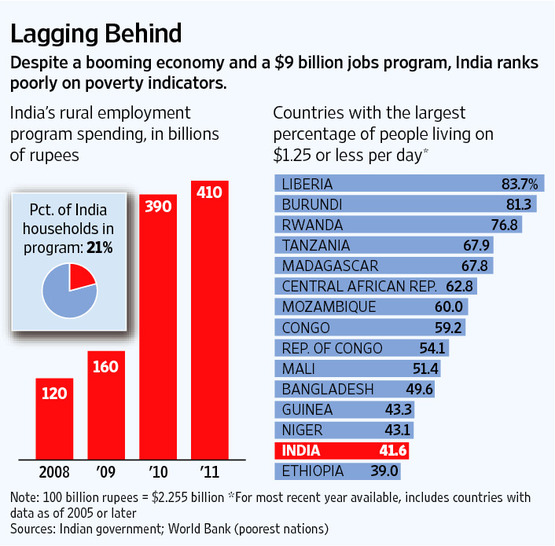*India is planing to invest around 1 trillion dollars in its Infrastructure in Next 5 years....Canada eyes India for investment in trillion-dollar infrastructure plan
*2011-2012 India will be allocating around 10 billion$ for Education...The Times of India on Mobile
*We are introducing a Food security bill of around 20 Billion $...
Now let see wether you can compete with us here or wether your politician will just let you eat grass to fulfill their Nuclear Sub Dream
All of infrastructure spending in India is financed by external debt....which is not guaranteed.
Eating grass is not good, but it beats eating toxic mud, which is what BBC says is happening in India.
Here's an excerpt of a recent BBC story of Indian children eating dirt to survive:
In Ganne, just off the main road about an hour south of the city of Allahabad, this is a simple fact of life.
It is home to members of a poor tribal community, who live in small huts clustered around a series of shallow quarries.
Inside one of the huts sits a little girl called Poonam. She is three years old, and in the early stages of kidney failure.
Like many children in Ganne she has become used to eating bits of dried mud and silica, which she finds in the quarry. Tiny children chew on the mud simply because they are hungry - but it is making them ill.
When reports first emerged of children eating mud here local officials delivered more food and warned the villagers not to speak to outsiders. But Poonam's father, Bhulli, is close to despair.
BBC News - Diet of mud and despair in Indian village






